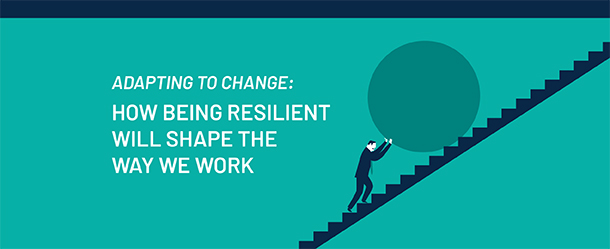



I had the opportunity to attend the 2019 Dodge Construction Outlook last week to hear top economists from Dodge and Moody’s deliver their forecasts for the coming year. Among a crowd of contractors, suppliers, designers, owners, and construction consultants such as myself, we heard the news that after a number of years of strong growth, we are likely to see zero growth in 2019. Our $800+ billion industry will remain flat.
The economists who spoke at the Dodge conference pointed out a number of risks that the U.S. economy is likely to face in the coming year: labor shortages, affordable housing shortages, tariffs, rising interest rates, inflation pressures, growing federal deficits, an aging population, material price increases, rising oil and gas prices, etc. And yet while we might consider this outlook to be sobering news, the economists also had encouraging words about the strong underpinnings of our economy. Unlike previous periods of decline, the economists felt confident that the economy was strong and any decline in 2019 and beyond would be relatively mild.
While there is no doubt that the industry will remain cautious about the coming year, the message of economic resilience was very good to hear. And we in the construction industry know a little something about resilience.
Construction professionals by our very nature are resilient. We need to be. Change is everywhere we look and we are called upon daily to adapt and deliver. A missing detail on the plans, an unforeseen condition, programmatic changes, price escalations, unanticipated weather events. These risks challenge us to regroup, and rethink our way to solutions which will avoid, mitigate or eliminate these threats. We rise to the occasion and exercise our resilience.
And yet, I wonder: can we learn to be more resilient? Can we get better at it? And will enhanced resilience allow us to achieve better results – improved safety, quality, cost, and schedule?
I think the answer to all these questions is a resounding “yes.” We know that first responders and emergency managers do a great job because they have a thorough emergency response plan and they spend time preparing to respond. They cannot possibly know exactly the form each hurricane, forest fire, or earthquake will take but they do know how they will respond when these emergencies strike. They are exemplars of resilience.
Resilience is born of established, efficient, and disciplined processes and controls. In the case of the construction industry, these take the form of cost, schedule, and risk management. By implementing a robust project controls program, we drive decision making away from the haphazard and reactive to a more measured response based on real data. Project controls require us to plan, track our progress, forecast future performance, and adjust as necessary. When we commit to managing our projects using project controls, we are positioned to be more resilient when change strikes and maintain course towards achieving our project objectives.
At the Dodge Construction Outlook, we were lucky enough to hear from keynote speaker, Mike Massamino. A former NASA astronaut and mechanical engineering professor, Mike flew in two space shuttle missions to service the Hubble Space Telescope and was, infamously, the first man to tweet in space (check out Saturday Night Live’s take on his tweet! SNL Twitter ). Mike chose to speak to us not about his successes as an astronaut but about his challenges. He told of the intensive planning and preparation that went into the space shuttle missions but also of the hurdles he encountered both in his training and on the missions. His words spoke volumes about how resilience is best achieved when you have a strong foundation in planning and process. “Think ahead, see ahead, stay ahead,” Mike advised us. Wise words that we in the construction industry should take to heart. Resilience is ours if we bring that mindset with us on each and every project we build.
Related reading: Resilience: Challenges Old and New
Comments